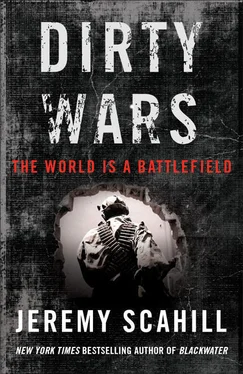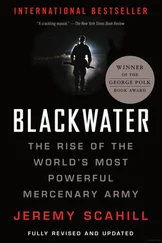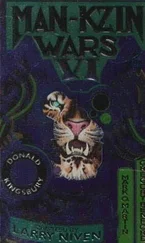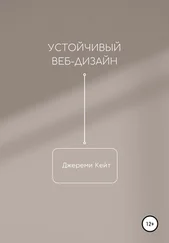Detainees were moved between rooms, depending on their cooperation with the interrogators. “We would do that to show him if you tell us what we want to hear, then this is the treatment that you’ll get,” recalled “Jeff Perry,” the pseudonym of a former interrogator at NAMA who provided eyewitness testimony on his experiences at NAMA to Human Rights Watch. “If you don’t, then this is the treatment that you’ll get. So there was a lot of that, going back and forth between the rooms.” If a prisoner was believed to have info on Zarqawi, he would be sent to the Black Room. It would also be used if “the interrogator thinks he’s being lied to or he’s not going to get anywhere with just talking to him,” Perry recalled. “We would march with him into the black room.” It would also be used if interrogators were “angry at [a detainee] and want[ed] to punish him for some reason.”
Inside the Black Room, the full-spectrum of SERE tactics were unleashed on detainees, along with a slew of medieval freestyle techniques. “It was painted black floor to ceiling. The door was black, everything was black,” recalled Perry. “It had speakers in the corners, all four corners, up at the ceiling. It had a small table in one of the corners, and maybe some chairs. But usually in the black room nobody was sitting down. It was standing, stress positions.” The interrogations there often incorporated extremely loud music, strobe lights, beatings, environmental and temperature manipulation, sleep deprivation, twenty-hour interrogation sessions, water and stress positions, and personal, often sexual, humiliation. The forced nudity of prisoners was not uncommon. Almost any act was permissible against the detainees as long as it complied with the “No Blood, No Foul” motto. But, eventually, even blood was okay.
One former prisoner—the son of one of Saddam’s bodyguards—said he was made to strip, was punched repeatedly in the spine until he fainted, was doused with cold water and forced to stand in front of the air-conditioner and kicked in the stomach until he vomited. Prisoners held at other facilities also described heinous acts committed against them by interrogators and guards, including sodomizing detainees with foreign objects, beating them, forcing water up their rectums and using extreme dietary manipulation—nothing but bread and water for more than two weeks in one case.
Members of the task force would beat prisoners with rifle butts and spit in their faces. One member of the task force reported that he had heard interrogators “beating the shit out of the detainee.” According to a former interrogator with the task force, one of his colleagues was “reprimanded and assigned to desk duty because he pissed in a bottle and gave it to a detainee to drink.” Members of the task force would also interrupt non-harsh interrogations and begin slapping or beating detainees. On at least one occasion, they abducted the wife of a suspected insurgent being hunted by the task force “to leverage the primary target’s surrender.” The woman was a twenty-eight-year-old mother of three who was still nursing her six-month-old baby. After interviewing numerous members of the task force at NAMA, Human Rights Watch concluded, “the abuses appear to have been part of a regularized process of detainee abuse—‘standard operating procedure.’”
Steven Kleinman, at the time a lieutenant colonel in the air force, arrived at Camp NAMA in early September 2003, just as McChrystal was taking over as commander of JSOC. Kleinman was a veteran interrogator and an air force SERE instructor. When he was first dispatched to Iraq, he believed his job was to observe the interrogations at the camp and analyze how they could be done more effectively. A year earlier, Kleinman had investigated the program at Guantánamo and found “fundamental systemic problems” that he believed had undermined the stated goals of the interrogations. But the task force at NAMA had different plans. They told Kleinman they were having trouble getting actionable or reliable intelligence from their prisoners, and they wanted Kleinman and his SERE colleagues to help them apply SERE tactics to the interrogations. In essence, they wanted Kleinman and his colleagues to use the very torture tactics against detainees that they had taught US military personnel to resist.
Kleinman agreed that the intel was a mess, but he did not believe it was because the interrogations were not harsh enough. He described a chaotic situation lacking any effective screening of new detainees, with some prisoners appearing to have no intelligence value. But the task force wanted Kleinman and his colleagues to participate in interrogations, and eventually, they were ordered to do so. Kleinman soon found himself in the Black Room at NAMA. “I walked into the interrogation room, all painted in black with [a] spotlight on the detainee. Behind the detainee was a military guard…with a[n] iron bar…slapping it in his hand,” Kleinman recalled. “The interrogator was sitting in a chair. The interpreter was to his left…and the detainee was on his knees…. A question was asked by the interrogator, interpreted, the response came back and, upon interpretation, the detainee would be slapped across the face…. And that continued with every question and every response. I asked my colleagues how long this had been going on, specifically the slapping, they said approximately 30 minutes.”
Kleinman said he considered the tactics used on the prisoner to be “direct violations of the Geneva Conventions and [actions that] could constitute a war crime.” Kleinman says he told the commander of the Special Mission Unit at NAMA that his force was engaged in “unlawful” conduct and systematic violations of the Geneva Convention. It had no impact on the commander or Kleinman’s other JPRA/SERE colleagues. Kleinman said his superior told him that they had been “cleared hot to use SERE methods” in interrogations. Kleinman said he believed that was an “unlawful order,” adding that he “wasn’t going to have any involvement with it, and I didn’t think that they should either.” He was told that the prisoners were not entitled to Geneva Convention protection because they were “unlawful combatants.” The torture continued.
Kleinman also recalled a detainee whom the task force was trying to break. His colleagues decided to make the man believe he was being released and actually drove him to a bus stop. Moments later, they snatched him again and returned him to NAMA. The man “was literally carried by two of the guards into the bunker struggling against them. He was taken down there,” Kleinman said. His two SERE colleagues “took over from that point…. They ripped his [clothing] off—not cut—they ripped it off… ripped off his underwear, took his shoes, they’d hooded him already, then they—they had shackled him by the wrist and ankles—being screamed at the entire time in his ear in English about essentially…what a poor specimen of human that he was…. And then the orders were given that he was to stand in that position for 12 hours no matter how much he asked for help, no matter how much he pleaded, unless he passed out, the guards were not to respond to any requests for help.”
Despite Kleinman’s objection to SERE tactics being expanded at NAMA, the task force and Kleinman’s bosses forged ahead. In September 2003, they began developing a CONOP, or “Concept of Operations,” for HVT “exploitation” for the camp. Similar to the “Exploitation Draft Plan” that SERE’s chief psychologist, Dr. Bruce Jessen, had developed a year earlier for use in Afghanistan, it called for taking enemy torture tactics used to train US forces and reverse-engineering them. The CONOP called for “tailoring detainee punishment consequences to maximize cultural undesirability.” Less than a month after he arrived, Kleinman was pulled out of NAMA, in the words of the Pentagon inspector general, because it “became apparent that friction was developing” between the task force and Kleinman. Kleinman later told the US Senate that “friction” was an understatement and that he believed his life was being threatened by members of the task force in retaliation for his dissent. One task force member, he said, sharpened a knife while telling Kleinman to “sleep lightly” because the task force does not “coddl[e] terrorists.”
Читать дальше












